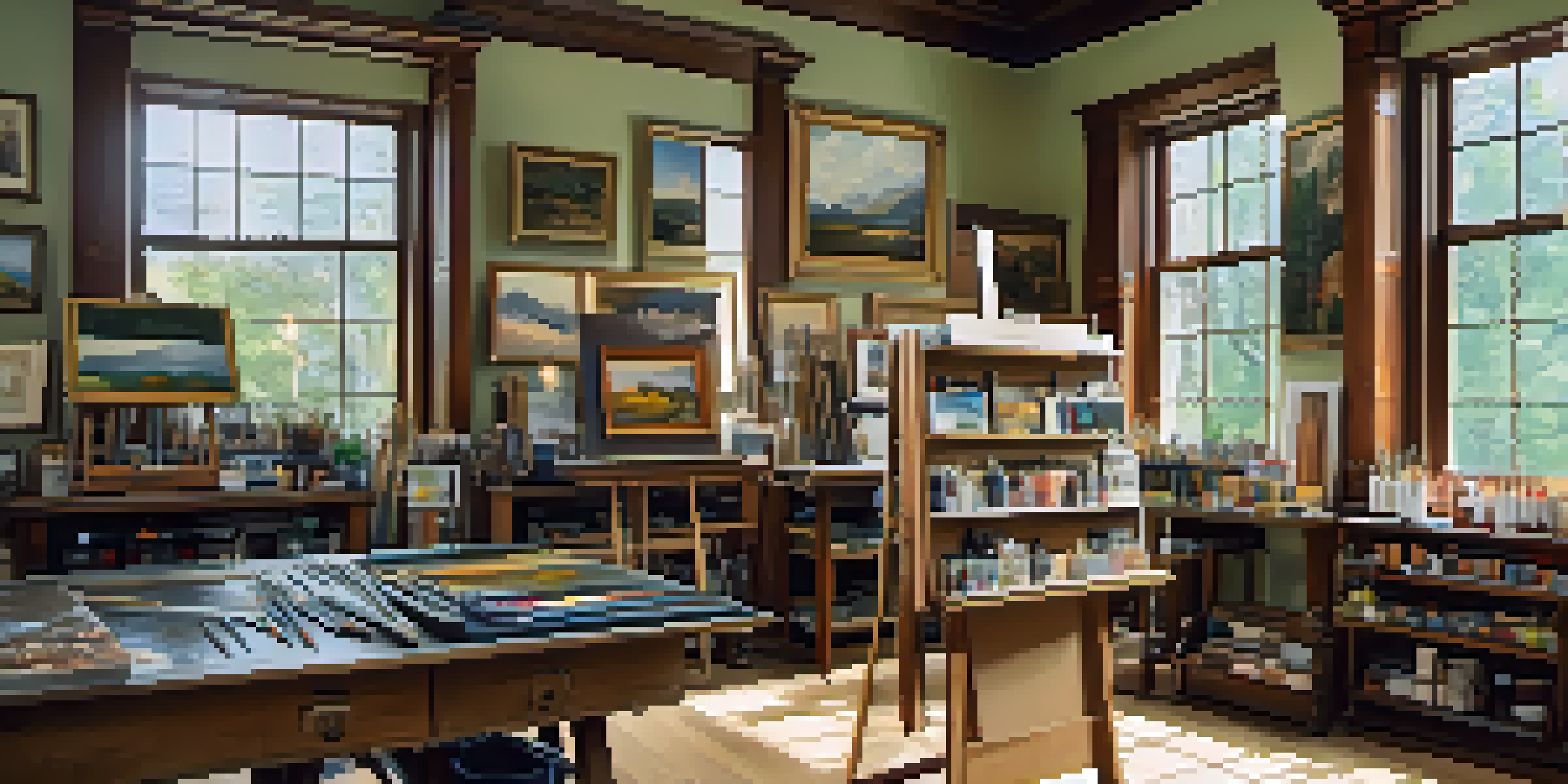Understanding Authenticity Through Art Restoration Practices

The Essence of Authenticity in Art
Authenticity in art refers to the genuineness of an artwork, its origin, and its creator's intent. This concept is essential because it shapes our understanding and appreciation of art. When we think of authenticity, we often imagine the original masterpiece, untouched and true to its creator's vision. However, the reality is that many artworks have undergone changes over time, making the notion of authenticity more complex than it seems.
The Role of Art Restoration
Art restoration is the process of repairing and preserving artworks to maintain their integrity. This practice is critical in ensuring that historical pieces survive for future generations to appreciate. However, restoration raises questions about how much alteration is acceptable before an artwork loses its authenticity. Balancing preservation with respect for the original work is a delicate dance that restorers must navigate.
Authenticity Shapes Art Appreciation
The genuineness of an artwork and the creator's intent are vital for our understanding and appreciation of art.
Methods of Art Restoration
Various techniques are employed in art restoration, ranging from cleaning to structural repairs. For instance, conservators may use specialized solvents to clean a painting without damaging the pigments. Each method comes with its own set of ethical considerations, as some techniques could potentially alter the original appearance of the artwork. This leads to a broader discussion about what constitutes a 'faithful' restoration.
Ethics and Authenticity in Restoration
The ethical implications of art restoration often revolve around the idea of altering an artwork's authenticity. Restorers must make tough decisions about how to intervene while maintaining the essence of the original piece. This is where the debate about 'over-restoration' comes into play, as excessive intervention can obscure the artist's original intent. Striking a balance between preservation and authenticity is crucial for maintaining artistic integrity.
Restoration Balances Preservation
Art restoration involves delicate decisions about how much intervention is acceptable to maintain an artwork's authenticity.
Case Studies: Famous Restorations
Examining famous restoration cases can shed light on the complexities involved. For example, the restoration of Leonardo da Vinci's 'The Last Supper' sparked discussions on authenticity and historical accuracy. While restorers aimed to revive the mural's vibrancy, some critics argued that the changes distorted the original vision. Such case studies highlight the challenges faced by restorers in their quest to honor the past while making it accessible to today's audience.
Public Perception of Art Restoration
The public's view of art restoration often reflects a mix of admiration and skepticism. Many people appreciate the effort to preserve artworks, yet some may question the authenticity of pieces that have been heavily restored. This tension can create a divide between experts and the general audience, leading to discussions about the value of restored works versus untouched originals. Understanding these perspectives can enhance our appreciation of the nuances in art restoration.
Future Tech Transforms Restoration
Advancements in technology, like digital restoration, are changing the landscape of art restoration while raising new questions about authenticity.
Art Restoration and Cultural Heritage
Art restoration plays a vital role in preserving cultural heritage, serving as a bridge between past and present. By restoring significant works, we not only protect history but also keep cultural narratives alive. This process often involves collaboration among historians, artists, and conservators, highlighting the communal aspect of preserving art. Ultimately, the goal is to ensure that future generations can connect with their cultural roots.
The Future of Art Restoration
As technology advances, the future of art restoration is poised for transformation. Innovative techniques, such as digital restoration, are emerging, allowing for non-invasive methods that respect an artwork's integrity. These advancements raise new questions about authenticity and how we define it in a digital age. As we move forward, ongoing discussions about ethical practices and the essence of authenticity will be crucial in shaping the field of art restoration.